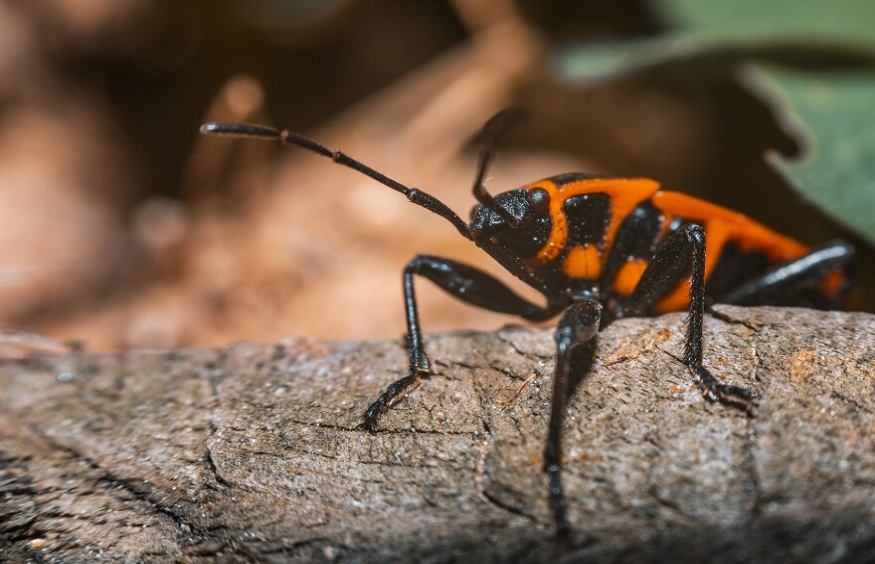Bugs And Their Contribution In Impact to The Ecosystem – How Does The Boxelder Bug Contribute?
 No matter what family they belong to, pests are never pleasant guests. Due to their lack of damage to their host plants or homes, box elder bugs, sometimes known as bugs, are often considered nuisance pests. The boxelder bug is a common little black and red bug species that people in Ferguson are familiar with. It is important to know them well in order to prevent them from entering and disrupting the ecosystem.
No matter what family they belong to, pests are never pleasant guests. Due to their lack of damage to their host plants or homes, box elder bugs, sometimes known as bugs, are often considered nuisance pests. The boxelder bug is a common little black and red bug species that people in Ferguson are familiar with. It is important to know them well in order to prevent them from entering and disrupting the ecosystem.
Although they do prefer to feed on box elder trees, they can also emerge from other trees like ash or maple, which is where their name originates. However, during the fall and winter, they gather and reproduce in huge numbers, particularly close to building structures, which causes minor problems and discomfort for building owners. To combat their infestation, you can get in touch with Ferguson Exterminator Services.
What does the feeding behavior of boxelder bugs include?
Although their primary food source is seeds, boxelder bugs also consume the sap of maple, ash, and other Acer trees, as well as the seeds and leaves of box elder trees. Their method of feeding involves tapping on plant fluids by penetrating the seed coat, leaf, or fruit tissue with specific teeth.
However, the small damage caused by their feeding includes the dropping of seeds and the browning of some leaves. In the end clear, boxelder bugs have little effect on the health of the plants, but eradicating other pests could drastically lower the health of the trees and plants they contaminated.
How do Boxelder Bugs impact the ecosystem?
-
Social Impact of Boxelder Bugs
Boxelder bugs are more well-known for the trouble they give to people, even though their effects on the local ecosystem are not particularly problematic. These insects can be found in big numbers on the building’s surfaces in the fall, especially on the walls that are frequently exposed to light.
This is explained by their propensity to enter houses in search of warmth, which can be a little annoying, particularly for the residents. The sheer number of boxelder bugs, their waste products, and the somewhat terrible odor they produce when squashed can be problematic for residents of infested dwellings, even though they do not bite people or transfer diseases.
Additionally, their secretions have the potential to slightly discolored surfaces and textiles, which could lead to property damage. Additionally, they invade homes and, if the infestation gets out of control, can cause worry or annoyance.
There is always the chance to lessen the damage by taking steps like caulking cracks and crevices, putting in screens, applying insecticides, and so on; but, the majority of these actions always require ongoing monitoring.
-
Agricultural Aspects of Boxelder Bugs
When they eat soft fruits like apples and plums, they are known to pose some small problems for fruit growers, particularly in specific areas. Fruit damage may lower its market worth, but these occurrences are extremely rare. Agriculture does not appear to be significantly impacted by boxelder bugs in particular.
However, They do not damage fruit trees, even if they occasionally eat fruits and flowering trees. Rather, they cause slight aesthetic consequences like bruising or tearing of the fruits or just damage to the leaves. Compared to the most aggressive agricultural pests, boxelder bugs cause negligible economic damage.
Wrapping Up!
There are various ways to get rid of these tiny creatures if they infest your property. The most efficient approach to get rid of them is through pest control services.Using the right methods, you can easily achieve good results.
Surprisingly, boxelder bugs prefer to spend the winter inside man-made structures, making them indoor pests. However, their feeding disturbance does not harm trees or plants. Nevertheless, their presence will not be enjoyable in any terms.
